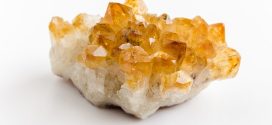Like animals, plants too release some chemical substance and make a physical defence to escape from herbivorous animals. In this context being vegetarian might suck. Plants can be deadly too. Listed below are top 10 deadliest plants which will spell doom if you ever come in contact with them.
- Angel’s Trumpet
Being a member of the genus Brugmansia, Angel’s Trumpet traces its origin to the tropical areas of South America. The plant gets its nickname due to the large, trumpet-shaped flowers that it bears measuring up to a height of 50cm and length of 35cm. These flowers have a high concentration of poisonous chemicals such as atropine and scopolamine. Rest of the parts of the plant contains tropane alkaloids. Consumption of any part of the plant may cause diarrhoea, nausea, hallucinations, and paralysis. Whereas overconsumption might be fatal.
- White Snakeroot
This native North American poisonous plant is so deadly that simply by consuming an animal who had earlier ingested the plant or by drinking a ting drop of the milk of the plant could lead to severe illness and in the worst case might be fatal. Tremetol is a toxin which the plant carries. The consumption of it might lead to vomiting, trembling, and cause severe intestinal difficulties. Abraham Lincoln’s mother Nancy Hanks Lincoln died in 1818 due to the sickness caused by White Snakeroot.
- Rosary Pea
What makes the plant distinguishable is the seeds with vibrant red, black and white colour. This plant could be found in parts of Indonesia and India. The presence of a natural poison, Arbin, makes the plant highly venomous. This chemical wrecks human body’s functions by inactivating ribosomes which are essential to the human body for synthesizing proteins. Vomiting, diarrhoea, difficulty in breathing and pain in eyes are some of the difficulties it might lead to. Exposure of arbin in a high concentration might cause death under 72 hours.
- Suicide Tree
The name itself warns against the consequences it might lead to. Belonging to the Oleander family, this plant is quite toxic for human beings. The Suicide Tree possesses Cerebrin, a toxic substance that holds the capability to disrupt the calcium ion ducts in the heart muscle which ultimately leads to an irregular heartbeat. If ingested in high amount, this toxin is quite deadly which is why the plant is often referred to as “the perfect weapon for murder.”
- Aconite
Flourishing in the hilly regions of Northern Hemisphere, Aconite a.ka. wolf’s bane, Leopard bane, or monkshood possesses deadly alkaloid. Rot tubers and the roots are the most toxic parts of the plant. Since the ancient Greeks used the plant’s toxin to kill wolfs and leopards, it led to the nomenclature of the plant as wolf’s bane or leopard bane. With attractive purple, blue and white mixed flowers, the plant elevates up to 6 feet. Accidental ingestion of aconite would lead to diarrhoea, burning, and vomiting and other serious difficulties such as irregular heartbeats, deviations in blood pressure and coma.
- Castor Bean Plant
Everyone has heard about the castor oil as an antiviral which treats skin conditions and reduces pain. Castor Bean plant is the plant from which the castor oil traces its roots. Since the seeds of the plant contain ricin, the plant is extremely deadly. Ricin is one of the most poisonous things you’d ever come across, even more, deadly than cyanide. Depending on the amount of toxin consumed it results in diarrhoea, mouth pain, blood pressure, and in the worst case, causes death under 24 hours.
- Cicuta
Also known as water hemlock, it’s listed as the most toxic plant growing in North America. Standing 2 to 2.5 meters tall with an umbrella-shaped white or green coloured flowers, this plant carries extremely toxic liquids. What is harrowing about the plant is that most likely it will affect the central nervous system within minutes. Since the seeds and roots also are toxic it will undoubtedly affect cattle and animals grazing on them.
- Manchineel tree
If there would’ve been a list of trees to avoid, Manchineel would top the list. Literally, it oozes toxins! Being near it should be avoided as much as possible, specifically during a fire near it and in rain. Coming in contact with it would cause blisters in the skin due to the presence of phorbol. Even inhaling the smoke of the tree would result in blindness and severe irritation. You’d find these trees with a red X mark or ring on the trunk as a sign to warn people against the deadliness of the tree.
- Belladonna
Though the berries might seem irresistible, we would recommend you to suppress the urge to taste. Usually, this plant is found in the regions of North America and Europe. When its properties are used it right ways it can be useful. But mishandled ingestion without the directions of a physician would result in dilated pupils, increased rate of heartbeat, delirium, hallucinations, respiratory failure ultimately causing death. Since the toxins can enter the body through skin contact, it is advisable to stay as far away as possible.
- European Yew
Found in the Middle East, Northwest Africa and Europe almost all parts of the plant can be equally poisonous. Studies suggest that people have committed suicide by consuming the seeds or the leaves of the plant. The plant contains taxane, a toxic substance, which can cause death abruptly within hours without showcasing any symptoms.
 Newspatrolling.com News cum Content Syndication Portal Online
Newspatrolling.com News cum Content Syndication Portal Online






